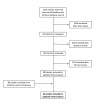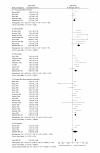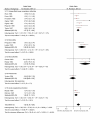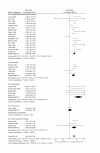Parental and household smoking and the increased risk of bronchitis, bronchiolitis and other lower respiratory infections in infancy: systematic review and meta-analysis
- PMID: 21219618
- PMCID: PMC3022703
- DOI: 10.1186/1465-9921-12-5
Parental and household smoking and the increased risk of bronchitis, bronchiolitis and other lower respiratory infections in infancy: systematic review and meta-analysis
Abstract
Background: Passive smoke exposure increases the risk of lower respiratory infection (LRI) in infants, but the extensive literature on this association has not been systematically reviewed for nearly ten years. The aim of this paper is to provide an updated systematic review and meta-analysis of studies of the association between passive smoking and LRI, and with diagnostic subcategories including bronchiolitis, in infants aged two years and under.
Methods: We searched MEDLINE and EMBASE (to November 2010), reference lists from publications and abstracts from major conference proceedings to identify all relevant publications. Random effect pooled odds ratios (OR) with 95% confidence intervals (CI) were estimated.
Results: We identified 60 studies suitable for inclusion in the meta-analysis. Smoking by either parent or other household members significantly increased the risk of LRI; odds ratios (OR) were 1.22 (95% CI 1.10 to 1.35) for paternal smoking, 1.62 (95% CI 1.38 to 1.89) if both parents smoked, and 1.54 (95% CI 1.40 to 1.69) for any household member smoking. Pre-natal maternal smoking (OR 1.24, 95% CI 1.11 to 1.38) had a weaker effect than post-natal smoking (OR 1.58, 95% CI 1.45 to 1.73). The strongest effect was on bronchiolitis, where the risk of any household smoking was increased by an OR of 2.51 (95% CI 1.96 to 3.21).
Conclusions: Passive smoking in the family home is a major influence on the risk of LRI in infants, and especially on bronchiolitis. Risk is particularly strong in relation to post-natal maternal smoking. Strategies to prevent passive smoke exposure in young children are an urgent public and child health priority.
Figures





References
-
- U.S. Department of Health and Human Services. The Health Consequences of Involuntary Exposure to Tobacco Smoke: A Report of the Surgeon General. Centers for Disease Control and Prevention, National Center for Chronic Disease Prevention and Health Promotion, Office on Smoking and Health. 2006.
-
- Department of Health. Department of Health and Social Services Northern Ireland; The Scottish Office Department of Health and Welsh Office. Report of the Scientific Committee on Tobacco and Health. London: The Stationery Office; 1998.
-
- Scientific Committee on Tobacco and Health (SCOTH) Secondhand smoke: Review of evidence since 1998. Update of evidence on health effects of secondhand smoke. London: Department of Health; 2004.
-
- Royal College of Physicians. Passive smoking and children. A report by the Tobacco Advisory Group. London: RCP; 2010. in press .
Publication types
MeSH terms
Substances
Grants and funding
LinkOut - more resources
Full Text Sources
Medical

